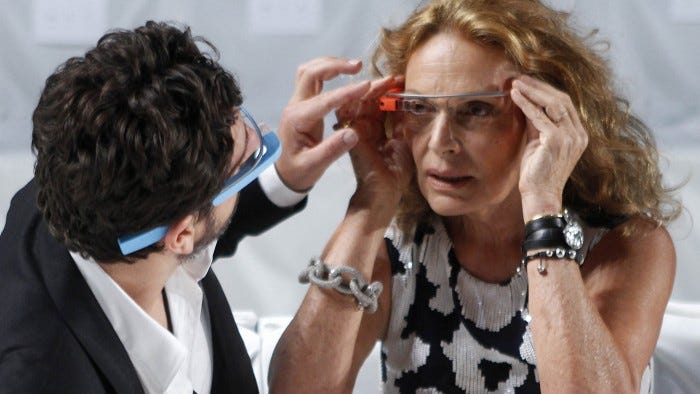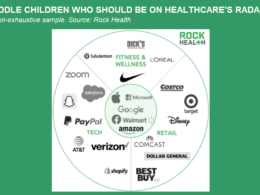Past failures with smart glasses have not deterred some from building wearables that combine cameras with AI
the health strategist
institute for continuous health transformation,
and digital health — for all
Joaquim Cardoso MSc.
Chief Research and Strategy Officer (CRSO),
Chief Editor and Senior Advisor
December 31, 2023
This is an Executive Summary of the article above, published on the Financial Times, on December 30th, 2023, and authored by Tim Bradshaw
One page summary:
Silicon Valley is revisiting the concept of smart glasses, reminiscent of Google Glass, but with a contemporary twist. Despite previous failures in the wearable tech space, companies are once again venturing into creating wearables that merge cameras with artificial intelligence (AI).
Meta’s Ray-Bans, incorporating AI-driven features, aim to redefine the perception of smart glasses, primarily focusing on voice-controlled AI assistants to enhance user experience.
While Apple’s anticipated launch of the Vision Pro, a high-end mixed-reality device, garners attention, industry leaders are emphasizing simpler glasses reliant on voice interactions over visual interfaces. Qualcomm’s CEO, Cristiano Amon, underscores the potential of smart glasses with audio and language models, foreseeing a shift toward this user-friendly interface.
The historical setbacks of Google Glass, criticized for privacy concerns and social acceptance issues, have not dissuaded tech giants like Meta, Magic Leap, Amazon, and Snap from exploring similar ventures.
Despite initial lukewarm reception, Meta’s upgraded Ray-Bans aim to integrate enhanced AI functionalities, enabling object recognition and interaction through the glasses’ cameras.
John Hanke, CEO of Niantic, lauds the improved Meta Ray-Bans as the right product for the current market, hinting at the potential of lightweight, cost-effective smart glasses surpassing elaborate devices like Apple’s Vision Pro.
Meta, known for its substantial investments in VR technology, envisions a convergence of VR and smart glasses in the future, despite the immediate focus on AI-driven wearables.
Notably, industry discussions have surfaced regarding potential AI wearables, involving influential figures like former Apple designer Jony Ive and SoftBank’s Masayoshi Son.
Additionally, Samsung’s trademark filings for “Samsung Glasses” and “Galaxy Glasses” suggest its entry into the smart glasses arena, possibly competing with Meta.
Carolina Milanesi, an analyst at Creative Strategies, highlights the imminent transformation in user experiences, marking a departure from the Google Glass era toward more refined and user-centric smart glasses.

Key Points:
- Silicon Valley renews interest in smart glasses integrating AI, despite past failures.
- Meta’s Ray-Bans leverage AI for improved functionalities, focusing on voice-controlled assistants.
- Industry attention shifts towards simpler glasses reliant on voice interactions over complex visual interfaces.
- Historical setbacks of Google Glass haven’t deterred companies from exploring similar ventures.
- Meta’s upgraded smart glasses aim to incorporate advanced AI features like object recognition.
- Niantic’s CEO believes lightweight, affordable smart glasses hold greater market potential than elaborate devices.
- Meta envisions a future convergence of VR and smart glasses, emphasizing AI-driven wearables for the present.
- Industry discussions hint at potential collaborations for AI wearables involving influential tech personalities.
- Samsung’s trademark filings suggest its entry into the smart glasses market, possibly as a Meta competitor.
- Analysts anticipate a shift towards enhanced user experiences with refined smart glasses compared to Google Glass.
Examples and Statistics:
- Google unveiled Glass in 2012 but discontinued it for consumers in 2015 due to privacy and social acceptance issues.
- Meta’s first Ray-Bans sold approximately 300,000 units, hinting at a niche market rather than mass-market success.
- The upgraded Meta Ray-Bans introduced in September promise improved AI capabilities but haven’t disclosed sales figures yet.
- Apple’s Vision Pro, a high-end mixed-reality device, is priced at $3,499.
- Discussions involving Sam Altman, Jony Ive, and Masayoshi Son suggest potential collaborations for AI wearables.
- Samsung’s trademark filings for “Samsung Glasses” and “Galaxy Glasses” indicate its potential entry into the smart glasses market.
Conclusions and Recommendations:
The resurgence of interest in smart glasses, augmented by AI-driven features, indicates a shift towards more user-friendly wearables. While past failures loom large, the industry appears poised for a new era, marked by Meta’s upgraded Ray-Bans and Apple’s Vision Pro.
Companies should prioritize user privacy, social acceptance, and seamless integration of AI to ensure the success of smart glasses. Collaboration among industry leaders could foster innovation, leading to a more diverse range of smart glasses catering to varied consumer needs.
Investments in research and development, coupled with market analysis, will be crucial for companies aiming to navigate the competitive landscape. Embracing consumer feedback and iteratively improving smart glasses can accelerate widespread adoption and establish a strong foothold in the market.
To continue reading:
Originally published at https://www-ft-com.ezproxy.brunel.ac.uk.












